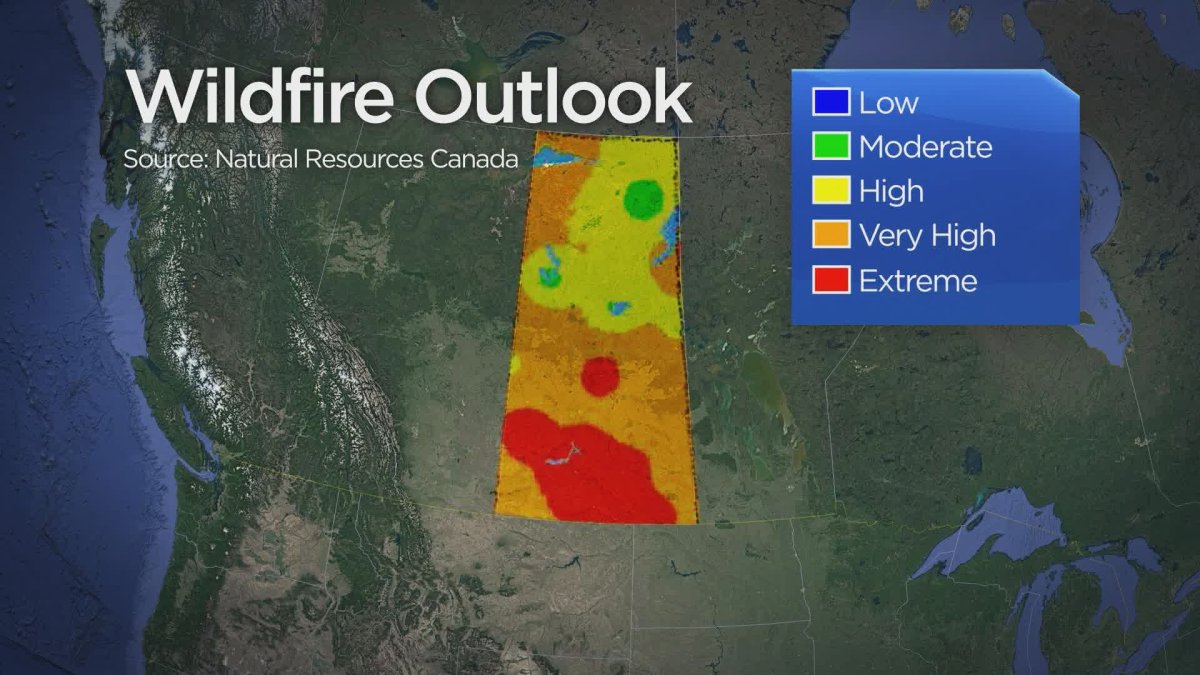Spring may have just begun in Saskatchewan, and already there have been five wildfires in the province. The average for this time of year is three.

The province’s fire commissioner, Duane McKay, said dry conditions throughout the southern half of the province are the main contributor.
“At this particular point, we are starting to see grass fires begin to show up on a fairly regular basis,” McKay said.
McKay said they haven’t seen much activity in the northern portion of Saskatchewan yet. He attributed this to a slow melt, which is helping keep the ground moist.
Global News meteorologist Peter Quinlan said March was one of the driest on record in Saskatchewan. Even with rain in the forecast, April has not seen much more precipitation.
“April has seen barely any precipitation – only three per cent of normal in Saskatoon – so we expect that fire-danger rating to soar in early spring; a time when it shouldn’t be very high at all. Usually, spring is when we see a lot of precipitation,” Quinlan said.
If the spring remains dry, Quinlan’s outlook for summer rain is not sunny.
“When we get into the peak of the heat, that often doesn’t allow there to be much reprieve when we do get rain,” Quinlan said.
“A lot of that quickly evaporates, so we do need to get a lot of moisture in months like June and even early July. June is usually the wettest month of the year in Saskatchewan.”
In May, Saskatchewan’s fire outlook carries an extreme advisory in much of south-central Saskatchewan from Natural Resources Canada. That agency said this is an average severity outlook.
In June, the extreme severity outlook dissipates, but more parts of the province are expected to enter higher severity categories. This is classed as above-average severity for much of northern and eastern Saskatchewan.
Prediction data for July through September is not considered to be very reliable at this point.
To reduce fire risk, McKay recommends keeping combustibles away from structures, properly storing firewood, responsible fire pit use, keeping the grass short, and for farmers calling ahead before controlled burns.
“We’ve put into place an 800 number, people can call in, let them know where they may be conducting these fires. The number is 1-866-404-4911. It’s monitored 24 hours a day,” McKay said.
“What we want to do right now is make sure people understand the level of risk if they are burning or intend to burn, contact your local municipality about fire bans, but we aren’t sure aware of any in place.”






Comments